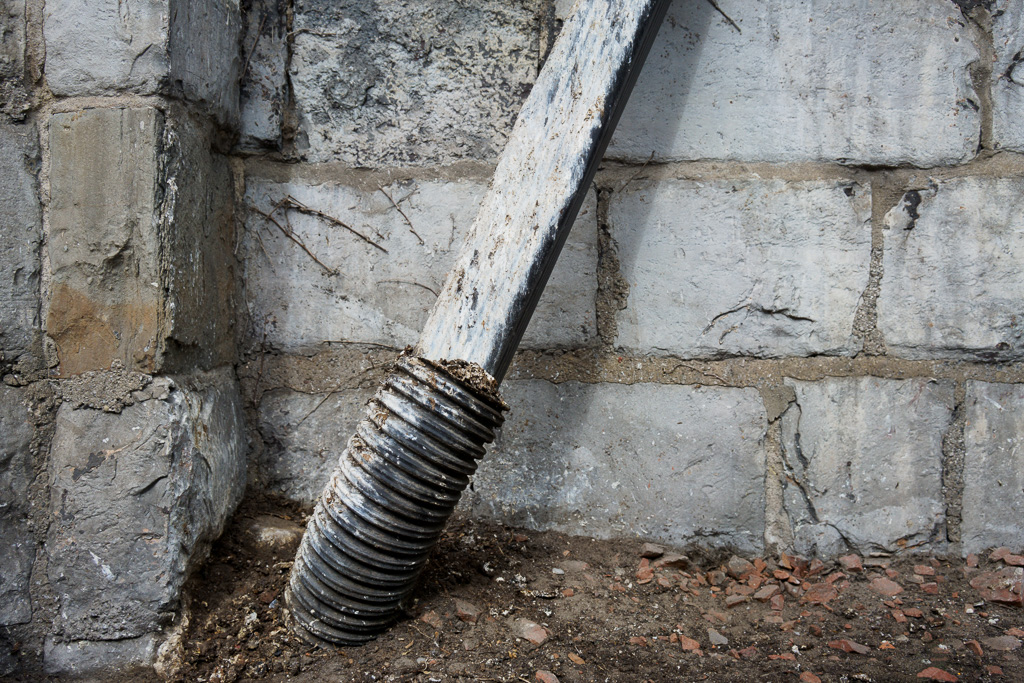I have a favourite downspout. That seems like a strange thing to confess, but it’s true. There is a downspout in downtown Toronto that I regularly visit for no other reason than to stare at it. Sometimes the light strikes it in just the right way and when it does, I’m ready with my camera. I’m not going to tell you where it is. If I told you where it is, you and a hundred other camera-wielding freaks would crowd around it, hoping for a chance to photograph it in the perfect light. This one is just for me. Go find your own downspout.
Of the many things about this downspout that move me, the light is the least interesting. Yes, the light is important; the light is always important to a photographer. The downspout sits flush against a west-facing brick wall, and a small tree shelters it from the full-on glare of light from the south. The only time direct light falls on it is in the late afternoon when the sun is low in the sky, even at the height of summer, and is turning a soft golden colour.
More interesting to me is its angle in relation to the vertical lines in the mortar between the bricks. The bricks are old and large, probably of limestone which is unusual in Toronto. The mortar between conventional bricks produces busy zigzag lines up a wall, and if I stare at them for any length of time, they make me feel like I’m getting a migraine headache. On this wall, the mortar has none of that busyness. In fact, because the limestone is similar in colour to the mortar, the visual effect is far more soothing. Angling down from right to left, top to bottom, comes an aluminum downspout with its end tucked inside a ribbed flexible tube that disappears into the dirt. There is something about the angle that I find compelling. Given the strict verticality of the brick wall behind it, the downspout’s angled descent almost suggests a rebellious attitude.
Good light and compelling angularity are all well and good, but hardly enough to clinch it for me. I could find well lit well angled downspouts at any one of half a dozen intersections throughout the downtown core. What distinguishes this downspout is the fact that it’s caked in a layer of bird shit—pigeon shit if specificity is important to you. Pigeons sit on the eaves overhead and, whenever one takes flight, it lightens its load by excreting on the downspout below. The accumulation of guano has effectively painted the downspout, converting it from an ordinary mass-produced strip of aluminum into a coarsely textured off-white surface with dark streaks that create an illusion of depth. It’s as if the pigeons have engaged in a collaborative art project.
This wouldn’t be the first time excrement has been instrumental in producing something visually stirring. There is Piero Manzoni’s 1961 Artist’s Shit (Merda d’artista), 90 tin cans of human faeces (one of which recently sold at auction for €275,000). Then there is Andres Serrano’s 1987 Piss Christ. I am, of course, ever mindful of a passage from Milan Kundera’s The Unbearable Lightness of Being in which he (or his character) suggests that shit is essential to art, otherwise a work is no better than kitsch. Perhaps the finest illustration of Kundera’s proposition is David Foster Wallace’s long short story “The Suffering Channel” which appears in the collection, Oblivion, and concerns the investigation of a mid-Western man who develops a talent for shitting miniature versions of famous works of art. In the case of my photograph, the application of shit works more in the nature of found art, or maybe as the exploitation of the avian world.

